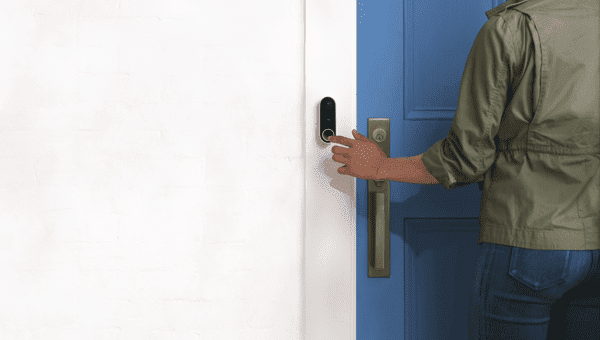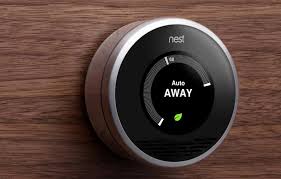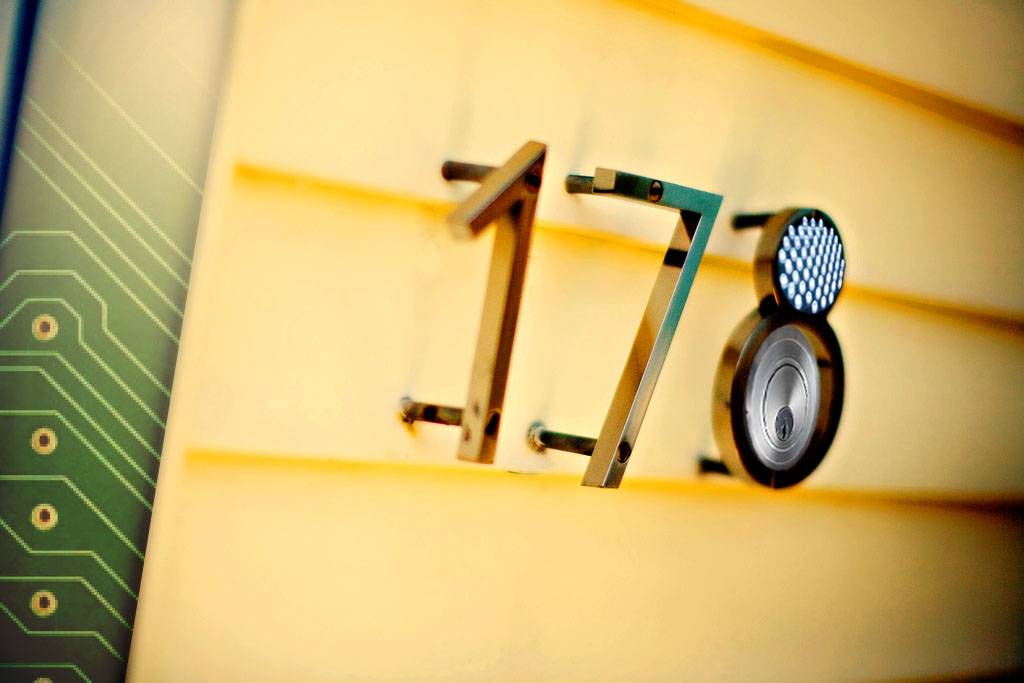Smart home technology offers ways to make your home more state-of-the-art than the Jetsons’ abode. They can offer better energy efficiency, innovative security systems and a myriad of added conveniences to your living space. The multitude of choices can be quite overwhelming: where should you begin when exploring ways to make your home more “connected?” Here are three easy and inexpensive options for bringing your home into the next generation.
If you’ve ever set the thermostat down to its “crisp and cool” setting and then kicked yourself for forgetting to turn it up before walking out the door for work, consider installing a smart thermostat. A learning thermostat can save you money on heating and cooling while making your home more comfortable. Automatic, intuitive adjustments can mean your thermostat eventually keeps itself under control.
The Honeywell Wi-Fi Smart Thermostat with Voice Control ($255, available on Amazon.com) offers voice activation which allows you to say “Hello, thermostat. I’m hot.” Upon hearing your distress call, it adjusts the temperature automatically, working even if you’re several feet away. A responsive touch screen gives you quick control, as well a wealth of information on the digital display, such as date and time, outside and indoor temperatures and the percent humidity in your home.
It’s a “learning” thermostat, so it memorizes your patterns and tries to automatically adjust for them. Download their mobile application to your smartphone and the thermostat will even send auto-alerts if extreme temperature changes occur and optional reminders to change your air filters. Use the application to adjust the temperature when you’re away so you don’t run your AC all day, but can still return home to the “crisp and cool” home you enjoy.
Another easy smart home upgrade is synchronized smoke and carbon monoxide detectors. The Nest Protect Smoke Plus CO detector ($99, available on Amazon.com) syncs with other detectors of its kind in your home, notifying you with voice alerts where the problem location is. If a fire starts in the basement, for example, the alarm in your bedroom will notify you verbally with the location of the danger, in plenty of time so you can safely evacuate your family. Connected through wi-fi, these units will also message your iOS or Android device if the alarm goes off or the batteries are low, so you don’t have to be home to be notified of a problem. The unit glows green when you shut off the lights, letting you know all the batteries and sensors are working, so you’ve got the peace of mind that you won’t be awakened at 3 AM to little chirping noises.
Lastly, if you’re looking for a smarter way to secure your home while still giving easy access to the people you want to allow in, then smart locks are truly the wave of the future. There are some intriguing possibilities in the works from manufacturers such as August, Goji, Lockitron and Kevo; but they’re so “next-gen” that they have not yet been vetted by CNET or Consumer Reports, so proceed with caution. The “coolest” one we’ve seen so far is the Goji Smart Lock ($278). Available in silver, gold or copper finish, Goji will completely automate the access to your home, all via your mobile phone.
You can assign user codes for your housekeeper and/or a house guest, even designate start and end times so you don’t need to remember to disable access later. Track the comings and goings of your kids, who can be given an electronic key fob in absence of a mobile phone. The door can even be programmed to open automatically as you approach by sensing your device in your pocket. Want to know who’s knocking? No problem. Goji will send a picture of said caller to your mobile phone. Their support center is available 24-hours-a-day and will assist you in case of a lockout or phone misplacement, disabling your device from accessing your home.
If you already have a home automation system or intend to set one up, then the Yale Real Living Touchscreen Z-Wave Deadbolt ($237.47, Amazon.com) is worth a look. It’s designed to be compatible with any Z-Wave product or automated control system such as MiCasa or Vera, and unlike similar smart locks of its type, it does not require a monthly fee. Voice-guided programming helps you with installation and maintenance. Remotely lock and unlock the deadbolt with your existing hub. Assign each user a customized code (up to 25 of them at a time). Depending on the control module you choose, email and text message alerts are available and you’re able to monitor the system using your mobile phone as well. For additional security, consider the “keyless” model to avoid lock picking or bumping.
Nerd Chick Adventures is written by Andrea Eldridge and Heather Neal from Nerds on Call, an onsite computer and laptop repair company in Redding.

About The Author: Andrea Eldridge is CEO and co-founder of Nerds On Call, a computer repair company that specializes in on-site and online service for homes and businesses. Andrea is the writer of a weekly column, Nerd Chick Adventures in The Record Searchlight. She prepares TV segments for and appears regularly on CBS, CW and FOX on shows such as Good Day Sacramento, More Good Day Portland, and CBS 13 News, offering viewers technology and lifestyle tips. See Andrea in action at callnerds.com/andrea/.




